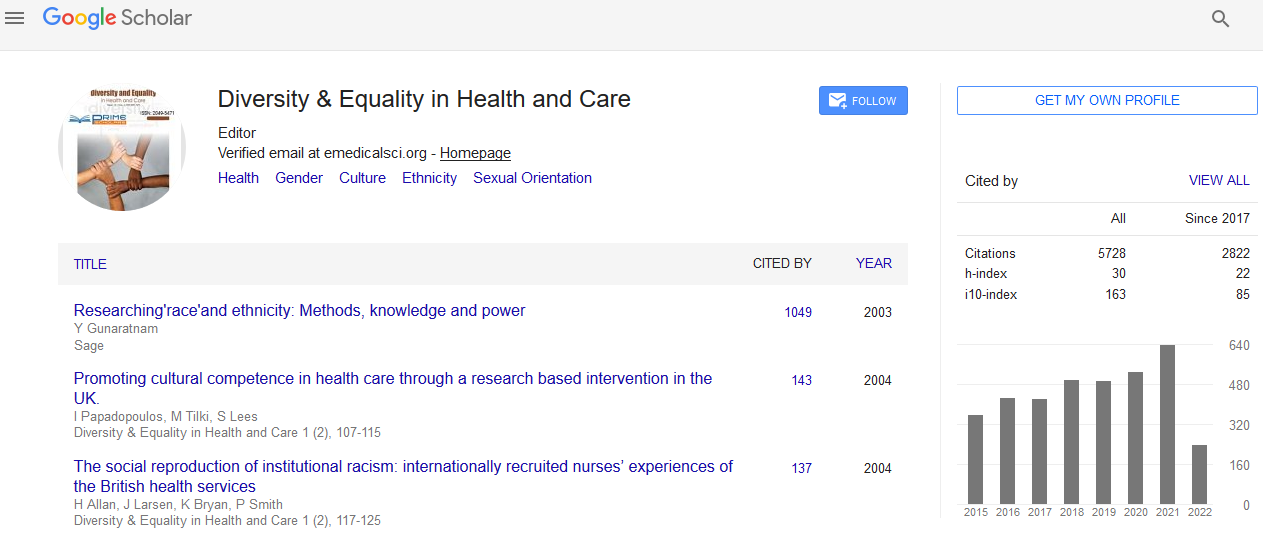Commentary - (2024) Volume 21, Issue 6
Embracing Diversity: A Path to Stronger Communities and Organizations
Yuki Tanaka*
Department of Sciences, Osaka University, Japan
*Correspondence:
Yuki Tanaka,
Department of Sciences, Osaka University,
Japan,
Email:
Received: 02-Dec-2024, Manuscript No. IPDEHC-25-22095;
Editor assigned: 04-Dec-2024, Pre QC No. IPDEHC-25-22095 (PQ);
Reviewed: 18-Dec-2024, QC No. IPDEHC-25-22095;
Revised: 23-Dec-2024, Manuscript No. IPDEHC-25-22095 (R);
Published:
30-Dec-2024, DOI: 10.35248/2049-5471-21.6.52
Description
Diversity is a powerful concept that encompasses the differences and unique qualities that each individual brings to a group, whether in terms of race, ethnicity, gender, age, sexual orientation, religion, or ability. It extends beyond visible characteristics to include diversity of thought, background, and experience. In today's interconnected world, embracing diversity is more important than ever, as it contributes to creating inclusive environments where people feel valued, respected, and empowered. From the workplace to schools, communities, and beyond, diversity fosters growth, creativity, and innovation, benefiting individuals and organizations alike. Diversity enriches society by fostering a culture of understanding and collaboration. When individuals from different backgrounds come together, they bring new perspectives, which can lead to innovative solutions and problem-solving. A diverse population is better equipped to address complex global challenges, as it taps into a broad spectrum of experiences and ideas. For example, diverse teams in research, technology, or policy development are more likely to create solutions that address the needs of a wider range of people, rather than just a select few. Beyond innovation, diversity also promotes social harmony. Communities that embrace diversity tend to have lower levels of prejudice and discrimination, as exposure to different cultures and viewpoints can break down stereotypes and encourage mutual respect. Diverse environments encourage empathy and understanding, allowing people to build connections across differences, leading to more cohesive societies. Moreover, embracing diversity at a societal level helps to reduce inequalities and promote fairness, as individuals from marginalized groups are provided with opportunities to thrive. In the workplace, diversity has proven to be not just a moral imperative, but also an economic one. Organizations that prioritize diversity often experience higher levels of employee engagement, job satisfaction, and productivity. This is because diverse teams are better able to think outside the box, offer a range of solutions, and bring new ideas to the table. Whether it's through promoting gender equality, supporting individuals with disabilities, or hiring from various racial or cultural backgrounds, diversity within the workforce can help organizations remain competitive in an ever-changing market. Moreover, companies that embrace diversity tend to attract top talent from a wider pool of candidates. As the global workforce becomes increasingly diverse, employees want to work in environments that are inclusive and reflective of their values. Research has shown that companies with diverse leadership teams perform better financially. For example, studies have found that companies in the top quartile for racial and ethnic diversity are more likely to have above-average profitability and value creation. This demonstrates that diverse teams not only make organizations more innovative but also contribute to financial success. Despite the many benefits of diversity, fostering a truly inclusive environment comes with challenges. One of the primary obstacles is unconscious bias, which can influence decision-making processes and lead to discrimination, even if unintentionally. People often make assumptions based on stereotypes, which can affect hiring, promotions, and workplace dynamics. Overcoming unconscious bias requires training, self-awareness, and a commitment to creating fair, equitable systems that prioritize merit and potential over preconceived notions. Another challenge is the resistance to change. In some cases, individuals and organizations may struggle with the idea of embracing diversity because of a fear of the unknown or a reluctance to challenge long-standing practices. Overcoming this resistance requires leadership, clear communication, and creating a culture where diversity is seen as an asset rather than a threat. Achieving a diverse and inclusive environment requires a proactive approach.
Acknowledgement
None.
Conflict Of Interest
The authors declared that they have no conflict of interest.
Citation: Tanaka Y (2024) Embracing Diversity: A Path to Stronger Communities and Organizations. Divers Equal Health Care. 21:52.
Copyright: © 2024 Tanaka Y. This is an open-access article distributed under the terms of the Creative Commons Attribution License, which permits unrestricted use, distribution, and reproduction in any medium, provided the original author and source are credited.

